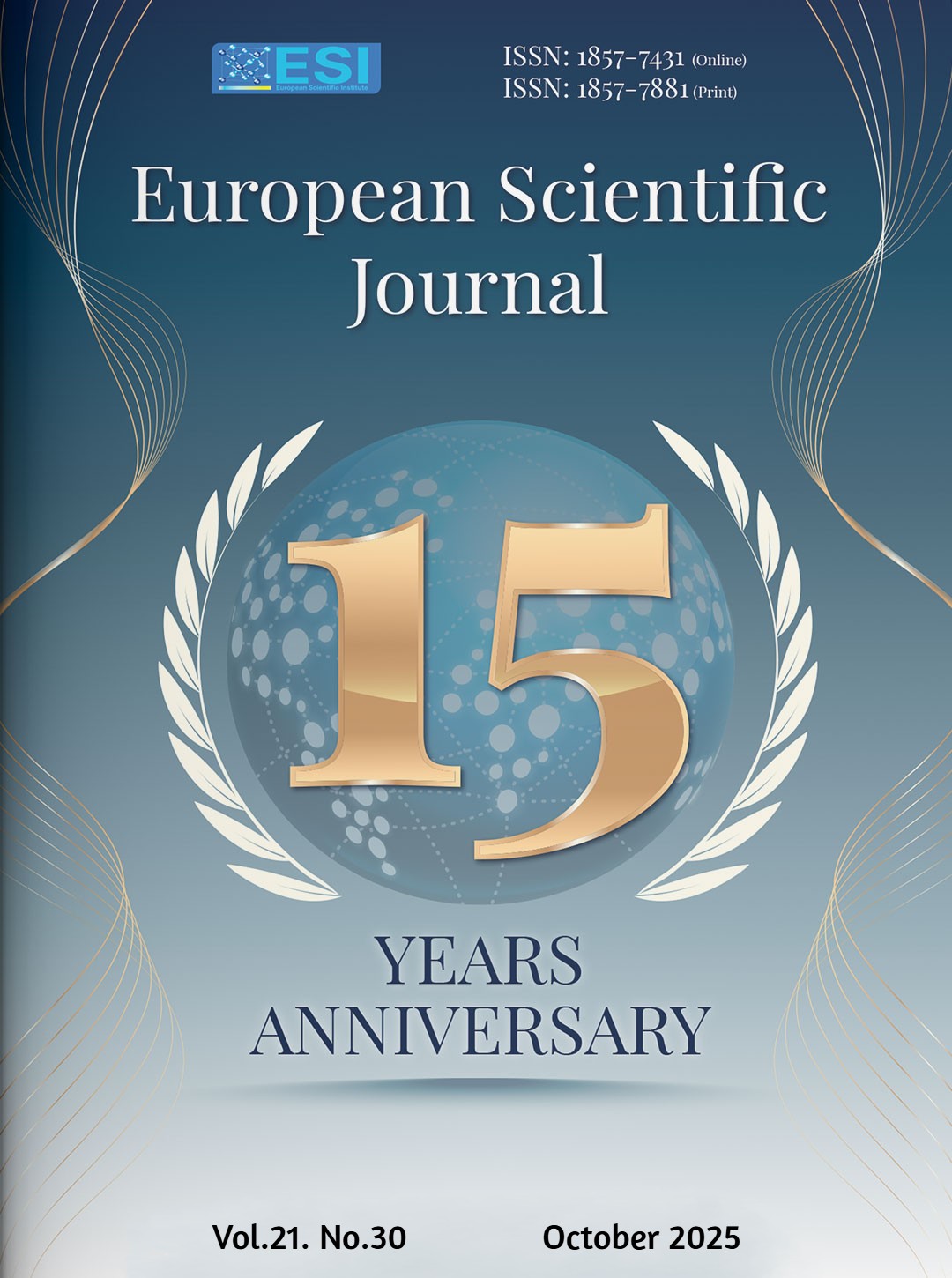Enquête ethnobotanique sur les variétés de niébé (Vignia unguiculata (L.) Walp.) commercialisées dans le district de Korhogo, au nord de la Côte d’Ivoire
Abstract
Le niébé (Vigna unguilata L. Walp.) est une légumineuse essentielle pour les populations à faibles revenus en Afrique subsaharienne, car il offre une source importante de protéines moins chère. Malgré son importance alimentaire, sa culture dans le district de Korhogo au nord de la Côte d'Ivoire, est encore peu valorisée. Cette étude a pour objectif de recenser les variétés de niébé produites et commercialisées dans ce district à travers une enquête ethnobotanique. Dans le cadre de cette recherche, la méthode de collecte des données s’est appuyée sur une étude quantitative et qualitative auprès de vingt-deux (22) commerçants recensés sur les différents marchés visités. Les résultats ont montré que trois variétés de niébé (blanc, rouge et noir) sont cultivées et commercialisées dans le district de Korhogo. Par ailleurs, il ressort des enquêtes une adaptation de ces variétés de Niébé aux conditions socioenvironnementales et culturelles locales. En outre, une représentativité genrée, ethnique et des tranches d’âge des enquêtées intervenant dans la commercialisation du niébé sur les marchés du district de Korhogo, a été établie. Enfin, avec des différences notables dans les habitudes de commercialisation et les prix pratiqués entre les différents acteurs, la recherche indique que les populations d'ethnie senoufo et malinké sont les acteurs de la filière Niébé avec une hégémonie de la population senoufo. En définitive, les données collectées pourraient contribuer à une meilleure organisation de la filière Niébé et à améliorer l'accès des populations locales, vu que le Niébé contient des protéines essentielles à la nutrition.
The cowpea (Vigna unguiculata (L.) Walp.) is an essential legume for low-income populations in sub-Saharan Africa as it is a valuable and affordable source of protein. Despite its dietary importance, the cultivation of cowpeas in the Korhogo district in northern Côte d'Ivoire remains undervalued. This study aims to identify the cowpea varieties produced and marketed in the district by conducting an ethnobotanical survey. For this study, data were collected through a quantitative and qualitative analysis of twenty-two traders identified in various markets visited. The results showed that three varieties of cowpea (white, red and black) are cultivated and sold in the Korhogo district. Furthermore, the surveys revealed that these varieties have adapted to the local socio-environmental and cultural conditions. Additionally, the gender, ethnicity and age of respondents involved in cowpea marketing in Korhogo district markets were analysed. Finally, notable differences in marketing habits and prices were observed between different stakeholders, indicating that the Senufo and Malinke ethnic groups are the main players in the cowpea sector, with the Senufo population holding the upper hand. Ultimately, the collected data could contribute to the more effective organization of the cowpea sector and improved access for local populations, given that cowpeas contain essential nutritional proteins.
Downloads
Metrics
PlumX Statistics
References
2. Akanza K. P., N’da H. A., Gbakatchétché H. & Cousin J. (2020). La culture du niébé : bon précédent cultural du maïs en Côte d’Ivoire. Journal of Applied Biosciences 149 : 15338 – 15343.
3. Anzara G. R., Yao K. G., Abessika G. A. A., Akaffou D. S. & Zoro-Bi I. A. (2023). Evaluation Agromorphologique des Différents Types de Port du Niébé (Fabaceae : Vigna unguiculata L. Walp) dans le Centre-Ouest de la Côte d’Ivoire. European Scientific Journal, Vol.19, No. 15, 176-188.
4. Appiah F. Asibuo J. Y. & Kumah P. (2011). Physicochemical and functional properties of bean flours of three cowpea (Vigna unguiculata L. Walp) varieties in Ghana. African Journal of Food Science Vol. 5(2), 100 -104.
5. Arvanitoyannis I. S.; Mavromatis A.; Rodiatis A. & Goulas C. (2007). Physicochemical and sensory analysis of dry bean landraces in conjunction wtih multivariate analysis: an exploraty approach. International Journal of Food Science and Technology, Volos Hellas, Volume 42, no 7, 819-826.
6. Asfaw A., & Blair M. W. (2012). Quantitative trait loci for rooting pattern traits of common beans grown under drought stress versus non-stress conditions. Molecular Breeding, 30, 681-695.
7. Baluku S., Sebuyange E. & Nyamangyoku O. (2018). Contribution à la connaissance des caractéristiques physicochimiques, culinaires et sensorielles des variétés de haricot cultivées dans le territoire de Kalehe/Sud-Kivu-RD Congo. Journal of Applied Biosciences, 124, pp. 12408-12416.
8. Coulibaly A. (2019). Les femmes ivoiriennes actrices de la culture vivrière. www.businessfrance.fr/ci-culture-vivrière-femmes. Consulté lé 19/04/2022.
9. Dairo O. (2024) Genetic Diversity in Cowpea (Vigna unguiculata (L.) Walp) under two growing conditions. Advances in Bioscience and Biotechnology, 15, 310-324.
10. Diarra I., Dizoe D. F., Sarka C. G. L. & N’da L. (2017). Etude des opportunités de marché des cultures vivrières. Giz, PRO-PLANTEURS, 121 p.
11. Ekissi E. G. S., Yapi J. C., Kouadio M. T., Gouledji A. A. & Kouamé P. L. (2019). Physical parameters and Physico-chemical properties of two beans (Phaseolus lunatus) consumed in Côte d’Ivoire. Word Journal of Advanced Research and Review, 03(02), 007-016.
12. FAOSTAT, 2020. https://www.fao.org/faostat/fr/#data/QCL, Consulté le, (01/042022)
13. Hedjal-Chebheb M. (2014). Identification des principes actifs des huiles essentielles de quelques résineux et plantes aromatiques de provenance Algérienne et Tunisienne. Etude de leur activité biologique à l'égard d'un insecte ravageur des graines stockées, Callosobruchus maculatus F. 1775 (Coleoptera : Bruchidae). Université Mouloud Mammeri de Tizi ouzou. Algérie. 99 p.
14. Kanyama M. C, Ngezirabona V. S., Masheka L. H. & Lebailly P., (2019). Etude de la filière haricot dans le groupement de Mudaka en territoire de Kabare (Est de la République Démocratique du Congo : acteurs, fonctionnement et performance. Tropicultura 37 (4) 1329-1354.
15. Kinyanjui P. K., Njoroge D. M., Makokha A. O., Christiaens S., Ndaka D. S & Hendrickx M. (2015). Hydration properties and texture fingerprints of easy- and hard-to-cook bean varieties. Food Science & Nutrition, 3 (1), 39-47.
16. Likibi M. S. A.., Diamouangana J. & Yoka J. (2020). Evaluation de la production d’un cultivar de niébé (Vigna unguiculata (L.) Walp) dans la vallée du Niari, Congo. Afrique Science, 16(2) (2020) 10-21.
17. Martinez M. M. R., Rojas A., Santanen A. & Stoddard F. L. (2013). Content of zinc, iron and their absorption inhibitors in Nicaraguan common beans (Phaseolus vulgaris L.). Food Chemistry, 136: pp. 87-93.
18. Morojele M. E. & Mbewe D. N. M. (2014). Characterization of common bean genotypes based on storage. African Crop Science Journal, Vol. 22 No 4, pp. 257-265.
19. Mwaipopo B., Nchimbi-Msollaz S., Njauz P., Tairo F., Williams M., Binagwa P., Kweka M., Kilangos M. & Mbanzibwa D. (2017). Viruses infecting common bean (Phaseolus vulgaris L.) in Tanzania: A review on molecular characterization, detection and disease management options. African Journal of Agricultural Research, 12(8) 1486-1500.
20. Naiker T. S., Gerrano A., Mellem J. (2019). Physicochemical properties of flour produced from different cowpea (Vigna unguiculata) cultivars of Southern African origin. Journal of Food Science and Technology, 56 (3) 1541-1550.
21. N’Gbesso M. F. D. P., Zohouri G. P., Fondio, L, Djidji A. H. & Konate D. (2013). Etude des caractéristiques de croissance et de l’état sanitaire de six variétés améliorées de niébé [Vigna unguiculata (L.) Walp] en zone centre de Côte d’Ivoire. International Journal of Biological Chemistry, 7 (2) 457-467.
22. Njoroge D. M., Kinyanjui P. K., Christiaens S., Shpigelman A., Makokha A. O., Sila D. N & Hendrickx M. E. (2015). Effect of storage conditions on pectic polysaccharides in common beans (Phaseolus vulgaris) in relation to the hard-to-cook defect. Food Research International, 76 (1, pp. 105-113.
23. Ofem N. P, Kamal N. M., Pearson S. Shatte T., Jordan D., Mace E. et Ishii T. (2025). Genetic diversity and structure of Asian cowpea permplam. Scientific reports, 15: 27909.
24. Oyeyinka S. A., Kayitesi E., Adebo O. A., Oyedeji A. B., Ogundele O. M., Obilana A O & Patrick B. Njobeh P. B. (2021). A review on the physicochemical properties and potential food applications of cowpea (Vigna unguiculata) starch. International Journal of Food Science and Technology, 56, 52-60.
25. Sanga Palilo A.A.S., Majaja B.A. & Kichonge B. (2018). Physical and mechanical properties of selected common beans. Journal of engineering, 9p.
26. Schrauf R. W. & Sanchez J. (2008). Using free listing to identify, assess, and characterize age differences in shared cultural domains. The journal of Gerontology Series B: Psychological Sciences and Social Sciences, 63, 385-393.
27. Swamy, K.R.M. (2023). Origin, domestication, taxonomy, botanical description, genetics and cytogenetics, genetc diversity and breeding of cowpea (Vigna unguiculata L. Walp.). International Journal of Current Research, 15 (05) 24711-24746..
28. Tchumou M., Yao N. B., Kossonou Y. K., Adingra K. M. D., and Tano K., (2017). Enquête ethnobotanique sur l’importance alimentaire et socio-économique des grains de (Phaseolus lunatus L) consommé au sud et Est de la Côte d’Ivoire. International Journal of Innovation and Applied Studies, 21(3) 388-397.
29. Yéo V. (2018). Mutations des activités commerciales chez les senoufo de Côte d’Ivoire. Revue d’Histoire, d’Art et d’Archéologie Africaine, 30, 64-77.
Copyright (c) 2025 Michel Archange Libra, Mandoué Stéphanie Bamba, Kouassi Pascal Ettien

This work is licensed under a Creative Commons Attribution 4.0 International License.








